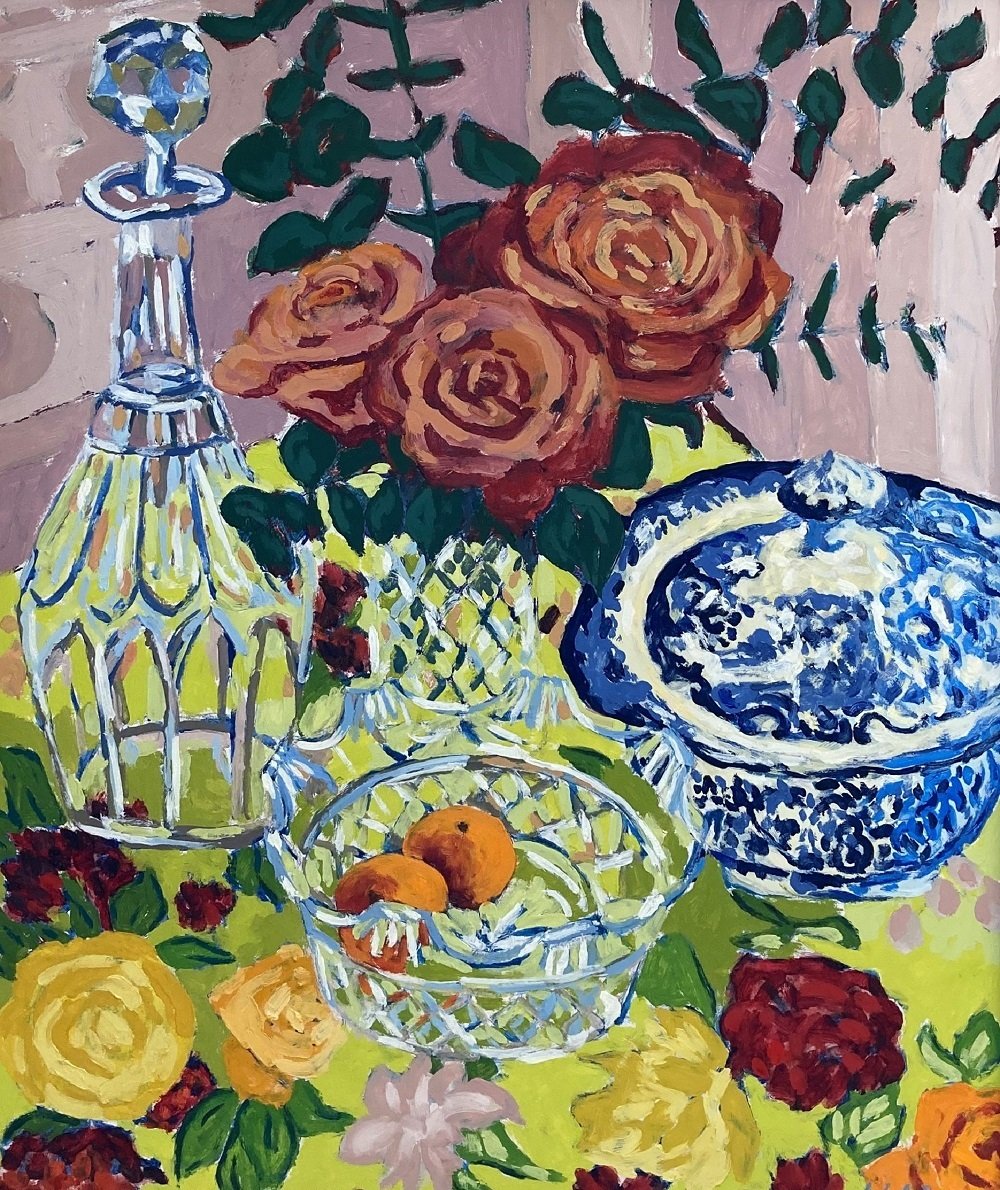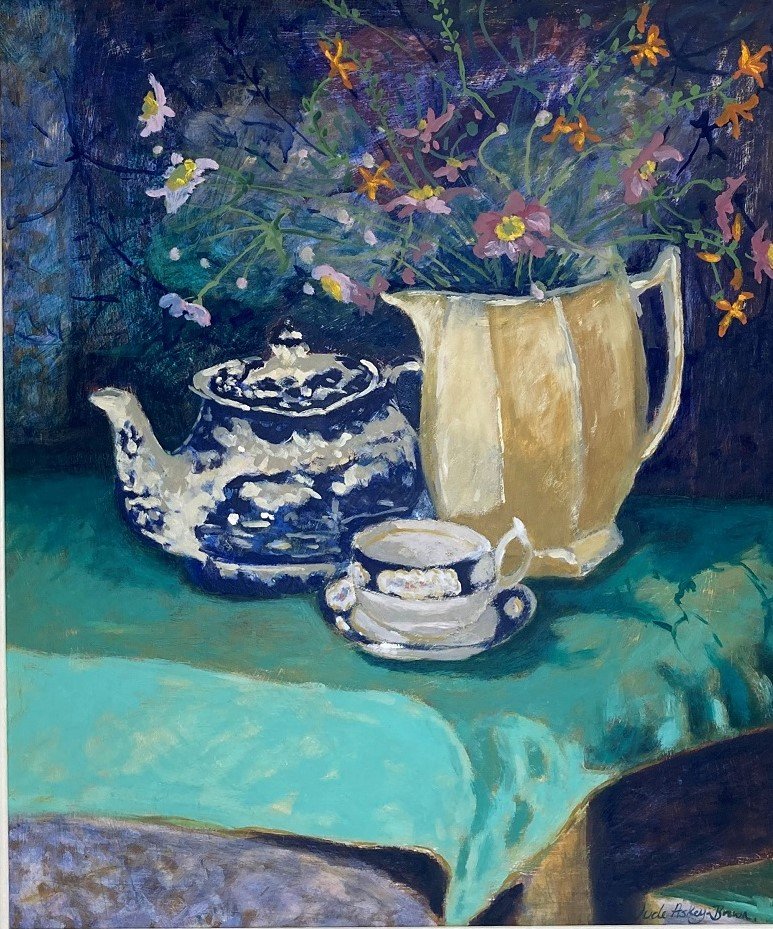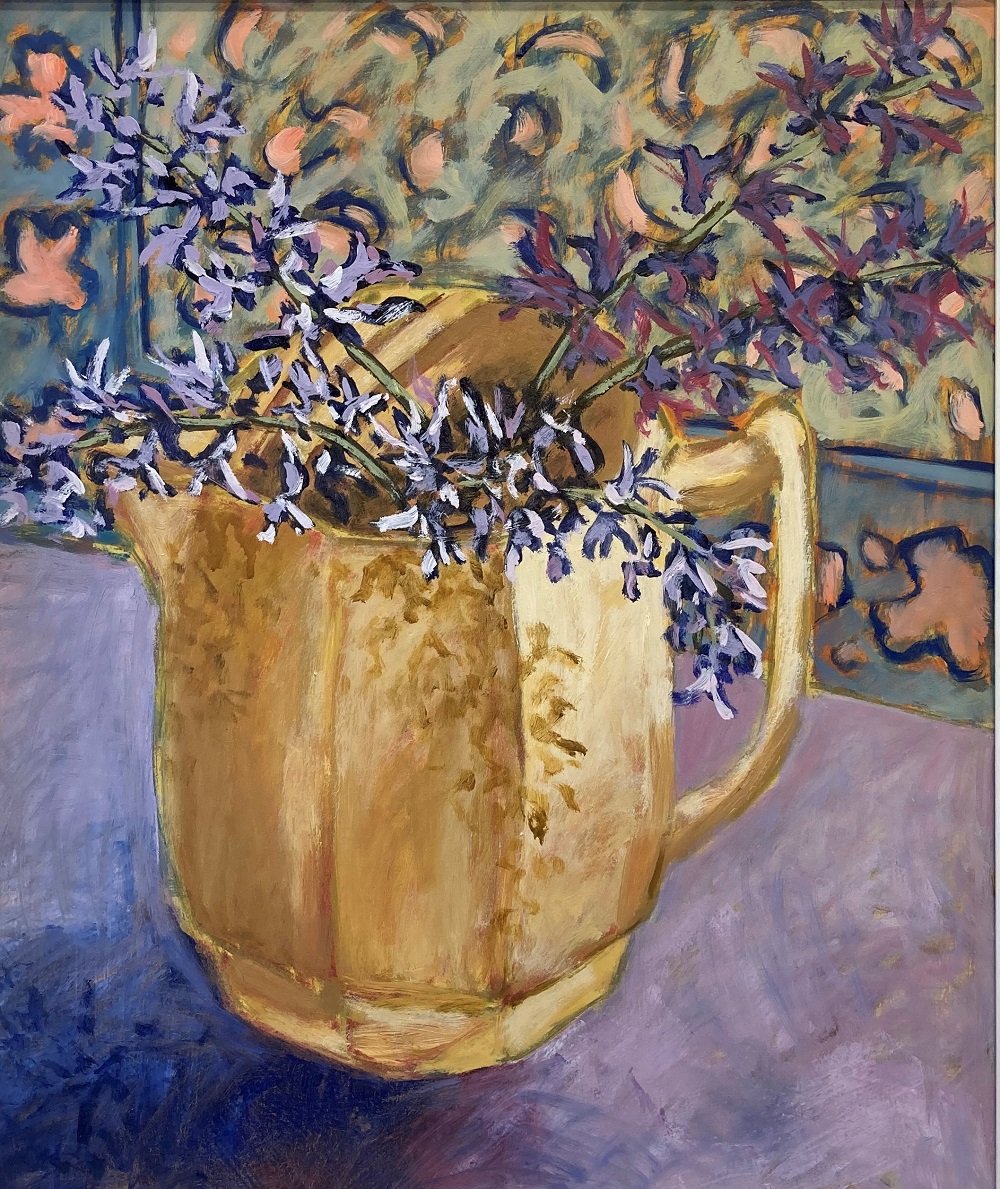Getting Started in Still life
Learn how to begin a still life painting with my step by step guide. I have been intrigued by still life paintings from a young age and for me the beginning of a still life starts with the careful selection of objects. A tea cup, jug, vase, the gathering of flowers from the garden or the inspiration when light casts a shadow over a tablecloth.
Still life to me is so much more than just the objects, they tell a story and set a mood, transport you back in time or a record of domestic life. Once I have the starting point I begin gather other items which will compliment or contrast in terms of colour, texture or style and then start to make up different arrangements. I like to take inspiration from other artists, I love the work of Bonnard, Matisse and Vuillard.
Getting Started
You may find it easier to think of a theme at first, flowers on a window sill, afternoon tea, fruit bowl, gardening tools or breakfast table.
Select one object (flowers, favourite cup, fabric, shell or fruit) to be the star of the show.
Find a variety of other objects which will tell the story of your still life or compliment your object. This could be colour size shape or texture. I am a collector of vintage crockery and love to use these in my still life, I have a few very sentimental vases which were my grandmothers and these often appear regularly in my paintings. I find a joy in painting these treasured objects and making them the star.
Find some objects that will contrast, if oranges are going to be the star of the still life maybe find something blue as a complimentary colour or choose something to harmonise depending on the effect you would like.
Select fabric which can be used for the still life to stand on and as a backdrop. think about colour and texture as this can have an important influence on the feel and look of your still life. Texture adds a layer of interest especially if it is in contrast for example a velvet fabric next to a glass bowl. How do you want the fabric to drape, should it fall off the side of the table or have a crisp edge? Do you want it to be flat or to have folds to add interest
Setting Up
Choose where you are going to set up your still life. Find somewhere that you will be able to paint or draw from comfortably as you may want to leave your arrangement up for a few hours or even days.
You may want to take advantage of a window sill or table near a window which will give you still life natural light. if you set up on a small table you can move this around to try different light sources. Think about the height of the table and where you will be standing and viewing from. If you haven't got a good source of natural light then use a lamp. Also if you want to paint all day then you will need a consistent light source as daylight will change, for dramatic lighting use a single light source for softer lighting use more.
I often spend quite a while setting up lots of different arrangements for my still life to find out which one works best. Use your phone and photograph them from lots of different angles and then look at them on screen, use the edit to crop them as this can also really help work out the composition. Once you are happy with a set up, look at it in black and white to check that the values work as well.
When setting up a still life think about the arrangement of the objects and how they interact with each other. Do you want them to touch, overlap or have a distance between them. Do you want them in a line, scattered, triangle shape. What mood do you want to create, is it formal or informal. You may want a breakfast table in morning light, or shells on a sunny window sill. Do you want the objects to tell a story or give clues to a deeper meaning?
Be careful that all the object are not the same height unless this is a definite focus for your work have objects at different heights as this adds interest and makes you move your eye around the canvas or paper. Look at the direction object are facing does this lead your eye in or out of the picture. For example what direction are the handles of the tea cups facing are all the stalks of the cherries pointing the same way would it be better to rearrange this?
Drawing Out
Whether you are going to complete a painting or a drawing I would recommend always starting with some quick 5 minute sketches. I find this allows me to warm up and I can play around with the view point and composition, until I feel comfortable to tackle a longer more detailed piece. I do my quick sketches in black ink or charcoal, it means I can focus on the position of the objects and the values without being distracted by the colour. As with all artwork you will find out what works best for you.
When thinking about how to begin a still life painting have a look at the work of other artists, there are lots of inspirational paintings and drawings from past masters to modern and contemporary painters. Make a Pinterest board of all your favourite ideas. You may want to recreate a famous still life or make a modern version.
Most importantly, just have fun!
Further ideas on how to begin a still life painting
Take a look at the following artists for inspiration they are contemporary artists who love still life.
Gabriella Buckingham
Alice Mumford





